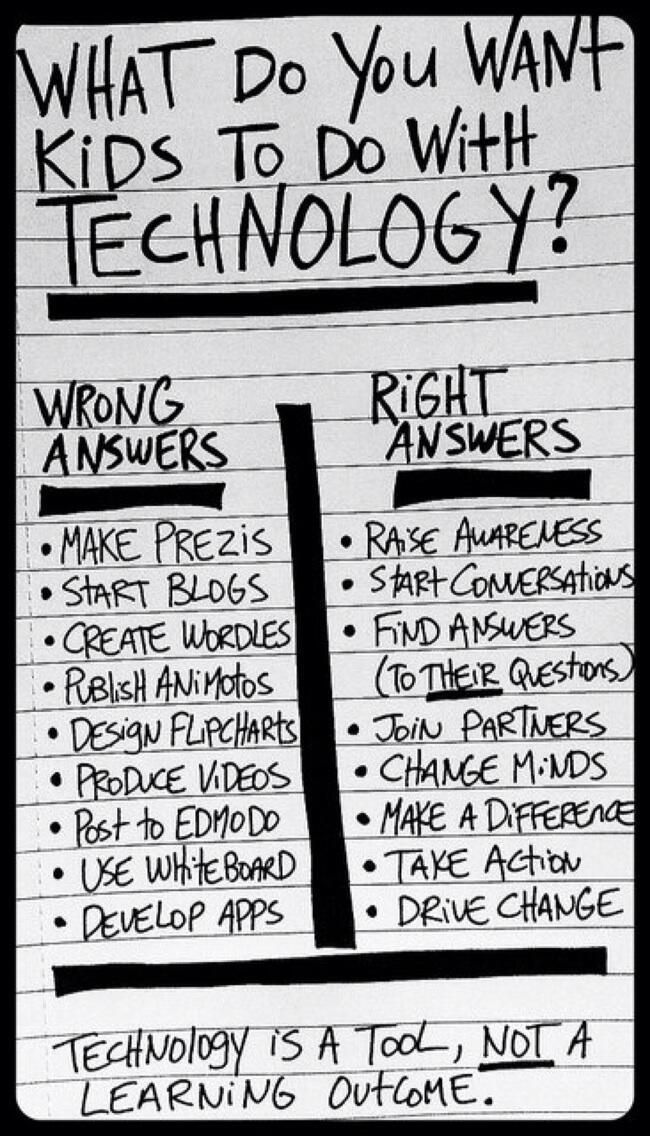
So much in learning is subjective, which makes sense because so much in life itself is also subjective, and we learn in order to live. So it’s natural.
Grey areas abound–the usefulness and quality of academic standards. The importance of curiosity in learning. The evaluation of technology in learning. The utility of letter grades. (And alternatives to letter grades.)
For every educator set on personalizing learning through technology in an outcomes-based K-12 classroom, there is another educator working to develop new learning models that extract the potential of self-directed learning, the role of play in learning, and better understanding the different levels of integration of technology in the learning process itself.
And it’s all good work.
What exactly technology does in learning is also subjective. We’ve offered a clumsy analogy in the past, but sometimes a simple T-chart clarifying ‘good and bad’ is helpful, which is what Bill Ferriter of the wonderful has done with the following image.
The Right & Wrong Way To Use Technology For Learning
Ferriter’s image begins simply enough, with a statement so many of your already believe (based on comments we’ve seen across social media and here on TeachThought as well).
Technology is a tool, not a learning outcome. (Learning is not about technology, mind you.)
But for those that need examples, it goes further, saying no to ‘developing apps’ and ‘publishing videos,’ and yes to more general functions like ‘Raising Awareness’ and ‘Starting Conversations’ (or help students find answers to their questions).
Certainly it’s not true–in our grey area of our own we’re creating here–that creating videos is ‘wrong’ or producing videos is ‘bad’ but rather that technology should ideally function in pursuit of that awareness and that conversation, not the app or ‘the video.’
Of course you probably already know that, but here’s to clarifying.
